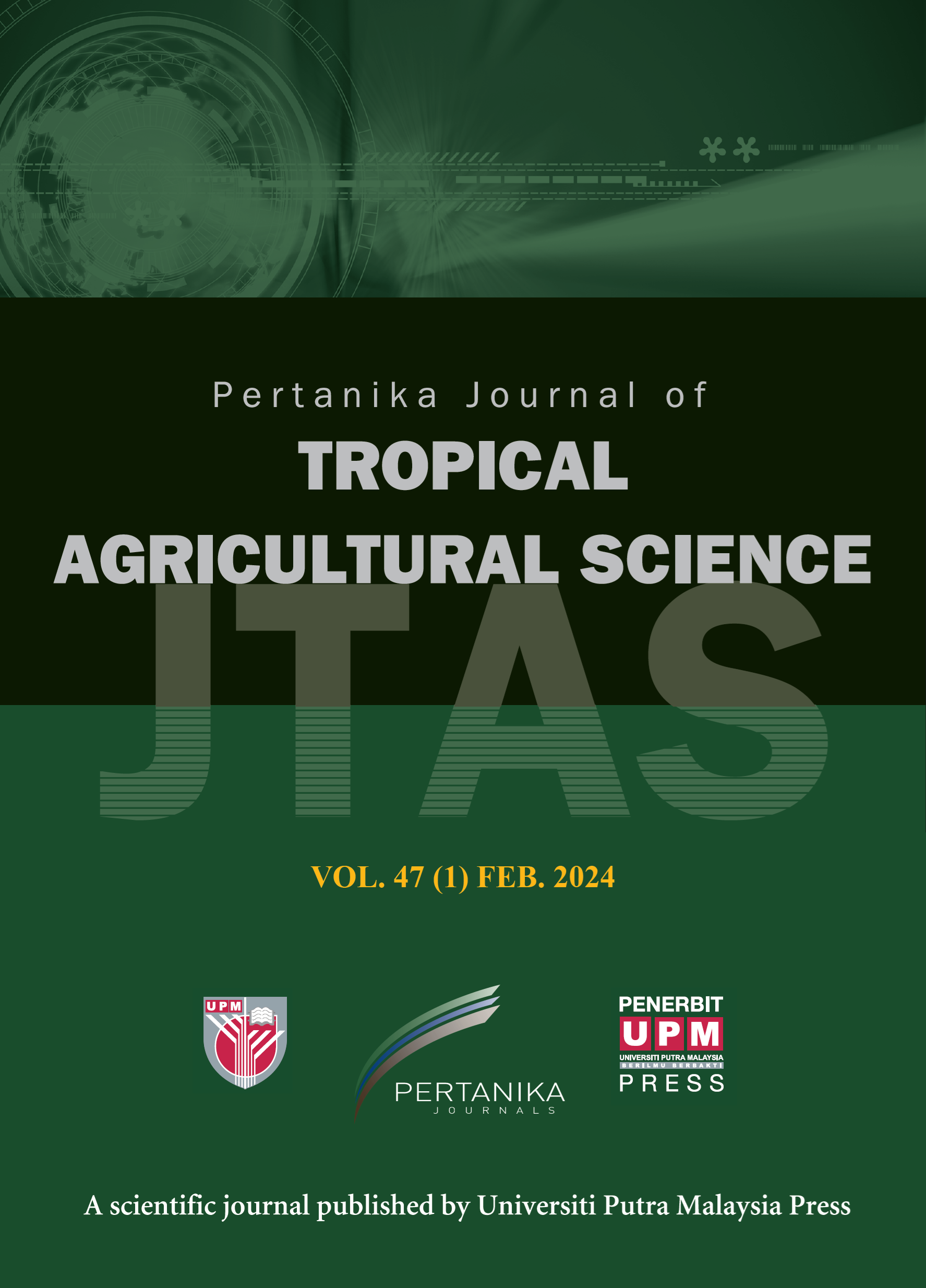PERTANIKA JOURNAL OF TROPICAL AGRICULTURAL SCIENCE
e-ISSN 2231-8542
ISSN 1511-3701
Brown Plant Hopper Resistance in Promising Doubled Haploid Rice Lines Selected by MGIDI and FAI-BLUP Index
Iswari Saraswati Dewi, Bambang Sapta Purwoko, Ratna Kartika Putri and Iskandar Lubis
Pertanika Journal of Tropical Agricultural Science, Volume 48, Issue 3, May 2025
DOI: https://doi.org/10.47836/pjtas.48.3.20
Keywords: Agronomic trait, BPH, doubled-haploid, multivariate selection, selection index
Published on: 2025-05-16
Rice (Oryza sativa L.) is the main source of calories for the world’s population but faces challenges from climate change and pest infestations, particularly the brown planthopper (BPH) in Indonesia. This study assessed agronomic traits, yield components, and resistance to BPH in 16 rice genotypes, comprising 14 doubled-haploid (DH) lines and two commercial varieties (Ciherang and Inpari 18). Genotype selection involved the Multi-Trait Genotype–Ideotype Distance Index (MGIDI) and Factor Analytic Index-Based Best Linear Unbiased Prediction (FAI-BLUP). Genotype-by-trait (GT) biplots were also utilized to visualize genotype performance across various traits. The response of the DH lines to BPH was assessed using biotypes 1, 2, and 3. The MGIDI-selected genotypes, were M-5, M-7, and M-12, which yielded 9.0-, 8.9-, and 9.6- ton ha-1, respectively. They significantly surpassed yield of the commercial checks. M-5 and M-7 were also selected in the FAI-BLUP, while M-12 was not due to the advantage of trait weighting in the MGIDI analysis. These lines aligned with the selection goals based on the rice ideotype, demonstrating ideal agronomic performance. The effectiveness of both MGIDI and FAI-BLUP in the selection has shown promising results, explaining 100% of the variance among traits and resulting in predicted genetic gains indicating improvements in most traits. Two promising DH lines (M-5 and M-7) showed moderate resistance to BPH biotype 1 and moderately susceptible to biotype 2 while susceptible to biotype 3. This variability highlights the challenge of using these lines in different environments with those two BPH biotypes.
ISSN 1511-3701
e-ISSN 2231-8542




